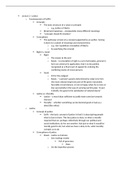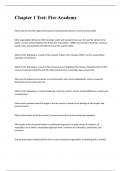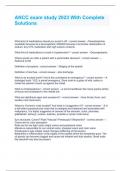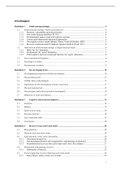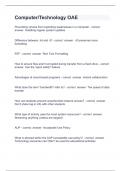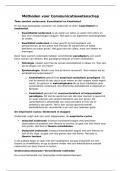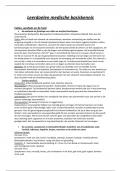As per CIRC FCL 19: LONG BRIEFING 4
1. NDB (NonDirectional RADIO Beacons)
2. AVAILABILITY OF NDB FACILITIES EN-ROUTE
3. LOCATION, FREQUENCIES, TUNING (AS APPLICABLE)
AND IDENTIFICATION CODES
4. SIGNAL RECEPTION RANGE
5. DISTURBANCES
a) STATIC INTERFERENCE
b) NIGHT EFFECT
c) STATION INTERFERENCE
d) MOUNTAIN EFFECT
e) COASTAL REFRACTION
f) LATE IN TURNS
6. ORIENTATION IN RELATION TO A NDB
7. HOMING
8. INTERCEPTING A PRE-SELECTED MAGNETIC BEARING
AND TRACKING INBOUND
9. STATION PASSAGE
10. TRACKING OUTBOUND
11. TIME/DISTANCE CHECKS
12. USE OF TWO NDBS TO OBTAIN A FIX
ALTERNATIVELY USE OF ONE NDB & ANOTHER NAVAID
13. OPERATIONAL ERRORS OF ADF
NB: all data here are not updated! Please check for it!
Do not hesitate to contact me for improvements.
Brief IRI 04-R2 ADF positioning & intercept° FIXED ROSE Page 1
, 1. NDB (NonDirectional RADIO Beacons)
Brief IRI 04-R2 ADF positioning & intercept° FIXED ROSE Page 2
, NDB transmitter JW - 'Jersey West'. 329.0 kHz:
NDB symbol on an aeronautical chart.
Antenne ADF Loop + Sense
Brief IRI 04-R2 ADF positioning & intercept° FIXED ROSE Page 3
, Cardioid = signal sum of:
• Sense antenna
+
• Loop antenna
Brief IRI 04-R2 ADF positioning & intercept° FIXED ROSE Page 4
, 2. AVAILABILITY OF NDB FACILITIES EN-ROUTE
a) See AIP ENR 4
a. E.g.: Marseilles NDB OB 395 kHz:
HO = depending on Operations
b) Else: NOTAMS
3. LOCATION, FREQUENCIES, TUNING (AS APPLICABLE) AND
IDENTIFICATION CODES
a) Location:
I. A low or medium frequency radio beacon transmits non-directional signals whereby
the pilot of an aircraft properly equipped can determine bearings and “home” on the
station. (Jepp Radio Aids p 15)
II. See IFR charts of: EBCI, EBLG, etc ... + low level
III. But less and less!!!! so disappearing ... DECOMMISSIONED !
b) Frequencies:
i. 190 - 535 kHz: Non-directional Radio Beacon (low power)
and Radio Range (low power).
ii. 190 - 1750 kHz: Non-directional Beacon (standard).
These facilities normally operate in a frequency band of 190 to 535 kilohertz (kHz), according
to ICAO Annex 10 the frequency range for NDBs is between 190 and 1750 kHz, and transmit
a continuous carrier with either 400 or 1020 hertz (Hz) modulation. (Jepp RA p 15)
NB: we can also tune the ADF’s in the AM broadcast band Freq (550 to 1650 kHz), but
not approved for navigation as stations do not continuously identify themselves, even
more than one transmits the same AM broadcast.
c. Voice transmissions are made on radio beacons unless the letter “W” (without voice) is
included in the class designator (HW). (Jepp RA p 15)
Brief IRI 04-R2 ADF positioning & intercept° FIXED ROSE Page 5
, c) Tuning:
Two types of modulation characteristics are commonly used for NDBs:
i. NONA1A. Signal consists of 2 separate elements, NON portion and A1A portion. The NON
part of signal is a continuous carrier wave, and is ideally suited to enable the ADF to establish
the direction from which the signal is arriving. The A1A part of the signal periodically replaces
the NON transmission and, being interrupted carrier wave, is used to carry the three letter
Morse identifier for the NDB. NONA1A beacons are normally used with high power outputs
for long range NDBs.
ii. NONA2A. Similar to NONA1A stations but now the station identifier is carried by the A2A
signal (keyed single tone amplitude modulation). NONA2A beacons are normally used for
medium range NDBs.
BFO: Beat Freq Oscillator within the ADF is brought into the circuit, and creates audible output
from non-amplitude modulated (NON and A1A) inputs.
This enables the pilot to check the NON
portion of the incoming signal for fading
(night effect) or high noise levels
(thunderstorm effect or precipitation static),
and of course to check the ident of an NDB
using A1A modulation.
Since loop aerial is isolated when ADF receiver is in BFO mode, the bearing must be ignored whilst
the function switch is in BFO position.
d) And display:
Brief IRI 04-R2 ADF positioning & intercept° FIXED ROSE Page 6
, e) Identification Codes
I. All radio beacons except the compass locators (2-letter) transmit a continuous 3-
letter identification in code except during voice transmissions.
II. Since ADF receivers do not have a “flag” to warn the pilot when erroneous
bearing information is being displayed, the pilot should continuously monitor
the NDB’s identification (muted, softened tone, less loud volume). (Jepp RA
p 15)
4. SIGNAL RECEPTION
RANGE
NDBs have one advantage over
the VOR. This advantage is that
low or medium frequencies are
not affected by line-of-sight.
The signals follow the curvature of
the Earth; therefore, if the aircraft
is within the range of the station,
the signals can be received
regardless of altitude.
NB: When a radio beacon is
used in conjunction with the
Instrument Landing System
markers, it is called a
Compass Locator.
(Jepp RA p 15)
As the range of the aircraft from the NDB in use increases, so the signal becomes weaker, and
therefore the signal to noise ratio decreases.
Brief IRI 04-R2 ADF positioning & intercept° FIXED ROSE Page 7
, 5. DISTURBANCES
Nearly all disturbances which affect the Automatic Direction Finder (ADF) bearing also affect the
facility’s identification.
Noisy identification usually occurs when the ADF needle is erratic.
Voice, music or erroneous identification may be heard when a steady false bearing is being
displayed.
(Jepp RA p 15)
a) STATIC INTERFERENCE
Static interference is one of the largest sources of error in the operation of NDB/ADF systems.
All kinds of precipitation (including falling snow) and thunderstorms can cause static
interference of varying intensity.
Precipitation static: Electrical discharges which occur when precipitation strikes the airframe
will increase the ambient radio noise level, and this may be sufficient to obscure the incoming
NDB signal, thereby reduces the effective range at which an NDB is usable and accuracy of
bearing information.
(Jepp RA p 15)
Static wick dischargers mounted on trailing edges help to discharge the aircraft's static
electricity to atmosphere, thereby minimizing the effect.
Thunderstorm activity can give rise to bearing errors of considerable magnitude and even to
false ‘overhead’ indications.
The electrical emissions during a thunderstorm may well result in the ADF indicating the direction
of the storm rather than the NDB.
Brief IRI 04-R2 ADF positioning & intercept° FIXED ROSE Page 8
, b) NIGHT EFFECT
At night, radio beacons are vulnerable to interference from distant stations. (Jepp RA p 15)
Within the LF and MF bands skywaves are not normally present by day, since the ionosphere
is intensely ionized and totally attenuates all LF and MF radio waves entering the layers.
By night the ionosphere is partially de-ionized and now NDB signals may survive to be
refracted back to the surface of the Earth.
What is now happening is that both surface wave and skywave signals from the NDB in use
may arrive at the aircraft together. It is likely that the two waves will be out of phase.
Additionally, if ionosphere does not lie parallel with the Earth's surface, the two signals will arrive
at the aircraft along different great circle paths. The net result is that the ADF bearing will be in
error.
In fact night effect is most pronounced during twilight periods, since at these times ionosphere is
changing both its intensity & its height above the surface.
When night effect is affecting the incoming signal the needle will tend to wander, and the
identification signal to fade, as the two incoming signals (the surface wave and the skywave)
drift in and out of phase with each other.
Night effect is assumed to occur because of the interaction of the surface wave from the NDB in
use and the skywave, also from the NDB in use.
Obviously, skywaves from NDBs or other stations operating on the same frequency will affect the
accuracy of the bearing (see station interference), however this distant station skywave
interference is not considered to be night effect, even though it will be most pronounced at night.
By night the skywaves from distant stations may well reach the aircraft, even though it is operating
well within the promulgated range of the beacon in use. It is for this reason that promulgated
ranges are not valid by night.
Brief IRI 04-R2 ADF positioning & intercept° FIXED ROSE Page 9
, c) STATION INTERFERENCE
In order to ensure that there is little or no interference between NDBs operating on the same or
similar frequencies, both beacon location and frequency allocation are carefully planned.
Surface wave coverage of NDBs on the same frequency should not therefore overlap.
If it is not possible to totally prevent this surface wave overlap situation, the NDBs concerned are
given promulgated ranges. This range, which is published in the AIP, denotes the maximum
range at which the NDB signal should be considered as being free from harmful distant station
interference BY DAY.
d) MOUNTAIN EFFECT
Hills and mountains reflect and re-radiate the LF or MF signals of an NDB. Consequently, the ADF
in a low-flying aircraft may receive both the great circle signal and a re-radiated signal at the same
time. This will result in an erroneous bearing,
Brief IRI 04-R2 ADF positioning & intercept° FIXED ROSE Page 10

